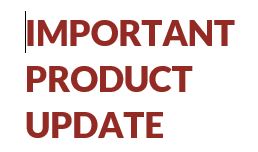The FCC estimates that the “wasted” time and nuisance caused by scam robocalls exceeds $3B each year. To combat this, Congress passed the TRACED (Telephone Robocall Abuse Criminal Enforcement and Deterrence) Act which provides the FCC with new tools to fight unwanted, and often illegal, robocalls, the top consumer complaint reported to the FCC annually. Click here to learn more about the TRACED act.
Often call scammers will spoof their caller ID and use robocalling tactics to mass-produce telephone calls and make it appear as if the call is coming from a legitimate business so that they may trick unsuspecting consumers.
A robocall is any call generated by a machine, usually done in high volume, which can deliver either a recorded message or a live person on the line. There are many legitimate forms of robocalling such as appointment reminders from a healthcare provider, important messages from your city government, severe weather alerts, etc
How NEC UNIVERGE BLUE is Implementing Robocall Mitigation?
The FCC has mandated the implementation of STIR/SHAKEN for all service providers by June 30, 2021, to combat robocalls.
NEC is following the FCC mandate by implementing STIR/SHAKEN, along with adding additional layers of Robocall Mitigation to go above and beyond the FCC requirements in combatting unwanted robocalls. The additional Robocall Mitigation solution works alongside STIR/SHAKEN to identify unauthorized and suspicious use of phone numbers and detect trends and anomalies in calling patterns.
What Does STIR/SHAKEN and NEC UNIVERGE BLUE Additional Robocalling Solution Do for Me?
Outbound Calls
NEC will examine the caller ID and compare it to a known list of IDs for that customer. If the caller ID being sent out does not belong to that customer, the call will be denied. NEC will also check the caller ID against known “Do Not Call” databases and if the caller ID is found in a known “Do Not Call” database then the call will also be denied. If the caller ID does belong to that customer, and not on a “Do NOT Call” list, NEC will attach an encrypted and signed certificate to the call before sending it out of the network. Software on the receiving end will check the authenticity of the message by decrypting the certificate.
Inbound Calls
Upon receiving an inbound call, NEC will decrypt the certificate and verify the call is from a known trusted source. If the call has been tampered with or is not from a trusted source who owns the telephone number, the call will be flagged as “SPAM” before passing it on to the receiving party. The inbound caller ID is also checked against a reputation database derived from multiple sources to determine if this telephone number is at risk or not.
Based on the reputation score received, NEC may also flag this call as “SPAM” or “ROBO” before passing it on to the receiving party. This will allow users to still receive calls, but the caller ID will be appended with “SPAM” or “ROBO” so that they can decide to answer/trust the call or not.
What does this mean for you?
NEC will be implementing these solutions to combat the robocalling nuisance. Here are the important
things to know:
- There is nothing you need to do, NEC will implement all of this in our network.
- These changes WILL NOT affect your calls, other than potentially seeing “SPAM” or “ROBO” as an inbound caller ID for a suspicious caller.
- This will improve your call answer rate and customer engagement for business calls leavin our network.
- Stops scammers by blocking or tagging potentially fraudulent calls.
- Ensures legitimate calls go through so you and your clients get the calls you want.
